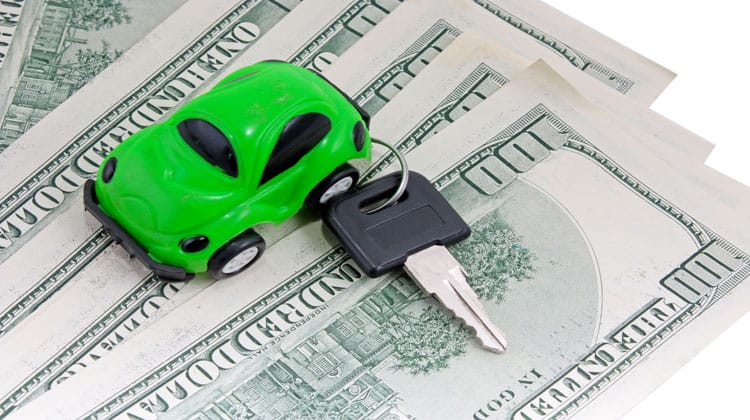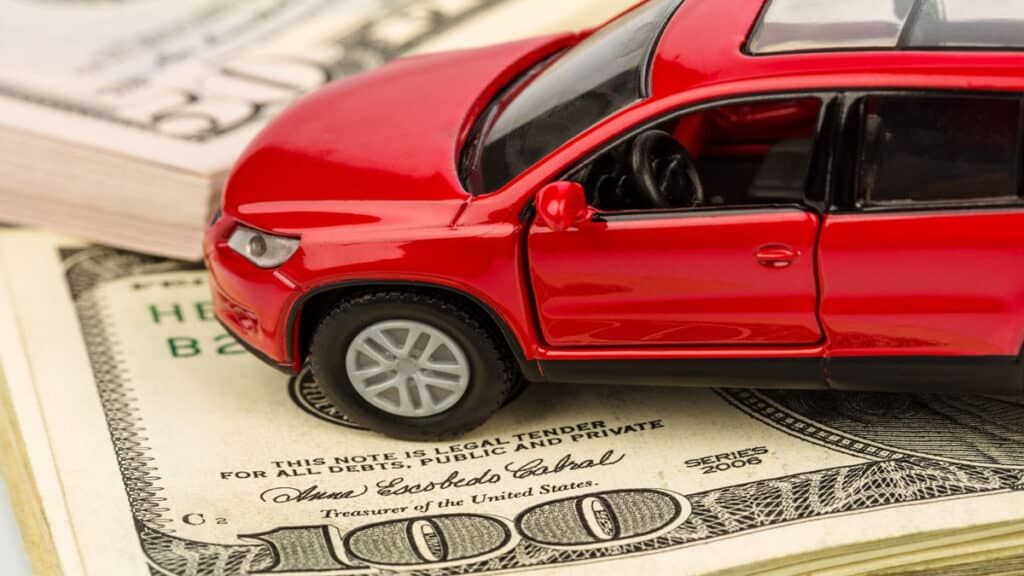THIS POST MAY CONTAIN AFFILIATE LINKS. PLEASE SEE MY DISCLOSURES. FOR MORE INFORMATION.
If you can no longer afford your monthly car payment, you are not alone…
I have a friend who is struggling with their car loan, $570 a month.
Insurance just went up again. Gas prices are still high. And with inflation, they can barely keep up with groceries.
Giving the car back sounded drastic… but was this their best option?
If that feels familiar, this guide is for you. Whether you’re behind on payments or simply overwhelmed by the cost of ownership, here’s a breakdown of your real, legal, and practical options.
I’ll cover everything from refinancing to voluntary surrender, plus the pros, cons, and what to expect financially and emotionally.
Let’s help you make a smart next move.
KEY POINTS
Should You Give the Car Back?

If you’re overwhelmed by your monthly car payment and thinking about “just giving the car back,” you’re not alone.
But before you drop off the keys, it’s crucial to understand what this really means — and what the consequences are.
What “Giving the Car Back” Really Means
In most cases, giving the car back refers to a voluntary repossession (also called voluntary surrender).
This means you contact your lender, let them know you can’t make the payments anymore, and arrange to return the vehicle.
It may sound like the responsible or “clean” way out, but it’s not without serious consequences.
You’ll Still Owe Money
Even if you return the car voluntarily, you’re still on the hook for the loan.
Here’s how it typically works:
- The lender sells the car at auction (often below market value).
- The proceeds go toward your remaining loan balance.
- You owe the difference — called the deficiency balance — plus possible fees (repossession, storage, etc.).
Example:
- You owe: $20,000 on the car
- Lender auctions it for: $13,000
- You may still owe: $7,000 plus repossession-related fees
And yes — they can sue you for that balance if you don’t pay it voluntarily.
Impact on Your Credit Score
And then there is your credit score to consider.
Voluntary repossession still damages your credit — in some cases almost as badly as involuntary repossession.
Here’s what happens:
- The missed payments leading up to the repossession are reported to credit bureaus.
- The repossession itself is listed as a negative mark.
- Your credit score could drop 100–150 points, depending on your history, according to this study.
Voluntary surrender may be slightly better for your credit than being forcibly repossessed, but both stay on your credit report for up to 7 years.
When Might Voluntary Repossession Make Sense?
Even with the potential negatives listed above, voluntary repossession could be the right move if all other options are exhausted, such as:
- You’re too far behind on payments to catch up.
- The car has high negative equity and can’t be sold easily.
- You’ve already tried refinancing or negotiating without success.
- You’re about to default, and this could reduce fees or avoid towing.
The bottom is this: A voluntary repossession may give you slightly more control — you return the car on your terms and may avoid a surprise visit from a repo company.
But what are your other options? Here are 10 alternatives to starting over.
Give Car Back: 10 Options To Start Over


Can’t afford car payment and looking for your options?
There are a few options when you get to the point of wanting to give your car back.
Each one has its pros and cons, and sadly, very few end up without negative consequences.
Here are the best options for you to consider.
#1. Involuntary Repossession
This is the classic vehicle repossession you know and should be an absolute last resort.
You stop making payments, and eventually, the repo team comes and takes your car.
The benefit to you is you save money for a few months because you stopped making payments.
The drawback is the harassing phones from collections.
The other major downside is your credit gets ruined in the process.
This will make it nearly impossible to get another car loan any time soon, as the repossession will stay on your credit report for up to seven years.
You might even struggle to get other forms of credit.
#2. Voluntary Repossession
With voluntary surrender, you continue to pay the lender but call up the financing company and tell them you don’t want the vehicle any longer.
If they agree to voluntary repossession, they will take the financed vehicle and sell it.
You will owe the difference between the remaining balance on your car loan and the price they received.
For example, if your car loan is $30,000 and the financed car sold for $20,000, you still owe $10,000 to the lender.
Also, this gets reported on your credit reports, so your credit scores will drop, but not as much as if you choose an involuntary repo.
It’s important to note that you will almost always owe on the car loan because the finance company will sell the car at an auction, which typically gets a low price.
#3. Talk To Your Lender
Before you choose voluntary repossession of your car, consider first calling the finance company.
Tell them you are struggling financially and see what they will do.
Sometimes, the lender will allow you to miss a few monthly payments and then add them back on at the end of the loan.
Doing so will not hurt your credit history.
The key here is to not agree to the first option they suggest.
They most likely have better options, but if you choose the first thing they offer, you will never know.
Remember, finance companies don’t want to repo your car. And they don’t want to go through a collection agency.
They want the loan repaid. So it is in their best interest to work with you.
#4. Talk To The Dealer


Sometimes, the finance company won’t help or offer a solution that works for you.
When this happens, contact the dealer where you bought the car.
They might have options for you, including contacting the finance company on your behalf, assuming you financed through the dealer.
If your vehicle is in high demand, they might offer you a higher than average amount, which could pay off the car loan debt in full.
#5. Transfer Payments
An often overlooked option is transferring payments to someone else.
Here, you assign the car loan payments to your parents or a relative, and they make the monthly payment.
To make this work, you make a repayment plan with them on how you will repay them along with the loan terms.
The benefits here are substantial.
You keep the car, keep your credit, and work out better loan terms.
The downside is it could ruin your relationship, especially if you skip out on repaying and they then take the car from you.
#6. Refinance Your Loan
There are many companies out there that will refinance auto loans.
In a high-rate environment, however, it may be challenging to get a low rate, which would lower your car payments.
On the other hand, if you paid down a significant amount of your auto loan, refinancing could lower your payment, even with the same interest rate.
#7. Sell Your Car


Selling your car allows you to get out from under the loan.
The problem is, most times, you will get less for the car than what you owe, meaning you will need to come up with the difference to repay the remaining loan balance when you sign the paperwork.
For example, if you owe $25,000 and sell for $18,000, you need to have $7,000 when you transfer the title to the new owner.
To ensure you sell your car for the most money, look at the value of your vehicle using Kelley Blue Book and other auto guides.
Some people consider trading in the vehicle with the dealer when they buy another car.
But the same thing happens here. Only this time, the amount you owe gets added to your new loan.
This puts you upside down almost immediately in the new car, so most personal finance experts do not recommend doing this.
#8. Take Out A Personal Loan
Instead of selling, consider taking out a personal loan.
You can get a lower interest rate than you currently pay, and you can extend the payments out longer, making the monthly amount you owe more manageable.
The downside is if you have to extend the term too far, and you end up paying for a car you no longer own.
#9. Find Additional Income


Instead of getting rid of the car, find a way to make some extra cash on the side to put towards your car payments.
There are hundreds of side hustle ideas out there that can put cash in your pocket relatively fast.
If you pay $600 a month and make $400 mowing lawns, you only have to pay $200 a month now.
While you might not want to use your free time to make extra cash, remember it is only temporary until you repay the loan.
Plus, you get to keep the car and improve your credit history.
#10. Combining Options
Nothing stops you from getting creative when it comes to solving this problem.
Maybe you know you could sell your car for $20,000, and you currently owe $25,000.
Instead of trying to pay off the loan, work a side hustle to help you pay down the $5K as quickly as possible.
Then, sell the car and pay off the loan in full.
If you still need a car, buy a reliable beater car for $5K and have a small car payment.
Or, work the side hustle to get $10K. Use half to pay down the loan and sell the car and use the other $5K to buy the replacement car.
Another scenario could be to borrow $5K from family or get a zero percent credit card balance transfer.
Use the cash to pay down the loan and then sell.
| Option | Pros | Cons |
|---|---|---|
| Involuntary Repossession | You don’t need to take action — the lender will reclaim the car.
Frees you from making more unaffordable payments. |
Major damage to credit score (up to 150+ points).
You may still owe a deficiency balance after the car is sold. Can result in legal action, wage garnishment. |
| Voluntary Repossession | Less stressful than involuntary repo — you initiate it.
May reduce repossession fees or towing costs. Shows a bit more responsibility to future lenders. |
Still significantly hurts your credit.
You’ll still owe the balance after sale, plus fees. Stays on credit report for up to 7 years. |
| Talk to Your Lender | May offer temporary relief: deferment, forbearance, or payment plan.
Helps avoid repossession or default. |
Lender may deny your request or offer limited help.
Could result in a longer loan or higher interest later. Doesn’t eliminate the debt — only shifts it. |
| Talk to Your Dealer | Some dealers may offer trade-in solutions or buybacks.
Can sometimes negotiate upgrades or swaps. |
Most sales are final — few dealers accept returns.
Offers may not cover the remaining loan balance. Limited option unless dealership has a return policy. |
| Transfer Payments (Loan Assumption) | Someone else takes over your loan or car lease.
You exit the loan with minimal damage to credit (if approved). |
Requires lender approval and new buyer with good credit.
You may remain liable if the person defaults. Not available on all loans. |
| Refinance Your Loan | Can reduce monthly payment or interest rate.
Extends loan term to ease monthly pressure. May help avoid default. |
May increase total interest paid over time.
Hard to qualify with bad credit. Fees or early payoff penalties may apply. |
| Sell Your Car | Often better value than letting the lender repossess.
Pays down or eliminates loan balance. Avoids credit damage if done before default. |
You still owe the difference if loan balance > car value.
Requires time, effort, and coordination with lender. May be stressful under time pressure. |
| Take Out a Personal Loan | Can help cover car payments temporarily.
Keeps your loan current and avoids credit damage. |
Adds another monthly payment and new debt.
High interest rates if your credit is weak. Not a long-term solution. |
| Find Additional Income | Can reduce financial stress across all areas.
Helps you stay current without changing the loan. |
May take time to find extra work or side hustle.
Doesn’t directly reduce car expenses. Not always feasible if time/energy is limited. |
| Combining Options | Can build a stronger plan — e.g. sell the car + side income.
More flexible and personalized. Helps reduce risk of any single option failing. |
More complex to manage.
Requires discipline and research. Not all combinations are compatible (e.g. can’t sell and refinance). |
What About a Leased Vehicle?
All the information is to help you with options to return a financed car.
If you have a leased vehicle, there are other options for you.
For starters, if you no longer want to make lease payments, return the car to the dealer and pay the early termination fee.
This is less expensive than if you want to return a financed car.
Plus, doing so will not negatively affect your credit.
Real Life Example: What Happened When My Friend Gave His Car Back


In the end, my fried decided the best option was to get rid of the car and get another one by trading his car in.
In the short term, this looked like a smart decision.
But long term, there are serious financial complications.
Here is what happened.
His car was worth $10,000 and he owed $17,000 on the loan.
This gave him negative equity of $7,000. (Negative equity is the difference between what your car is worth and what you still owe.
He had two options for this $7,000. Option one was to pay it. Option two was to roll it into a new car loan.
Since he didn’t have $7,000 to pay, he went with option two.
He found a used car for $12,000. The interest rate was 6% and he wanted a 5-year loan.
This would give him a monthly payment of $232.
But we have to factor in the $7,000 he still owes.
This means his loan will be for $19,000, making the monthly payment $368.
This is a savings of close to $200 a month, giving him some breathing room.
In the short term, this is a win.
But long term, he could easily find himself in the same financial situation because if he tries to sell the car before the loan is repaid, he is going to have to “roll over” the balance into a new loan again.
See, he already has and upside down car loan (negative equity). It is only worth $12,000 but his car loan is for $19,000.
He is smart to pick a low priced new to her car.
But I’ve seen many people get a $30,000 car and add their negative equity on top of that.
To afford the monthly payments, they extend the loan out seven or eight years, all but guaranteeing financial ruin in the years to come.
Frequently Asked Questions


Does giving a car back hurt your credit?
Yes, when you return a financed car through voluntary repossession, it will hurt your credit.
It won’t be as bad as if you decide to stop making payments, but it will lower your credit score.
Can you cancel an auto loan after signing?
Many people cite the “Cooling Off Rule” from the Federal Trade Commission that allows buyers to cancel sales contracts within three days of signing, but unfortunately, this does not apply to cars.
However, while the FTC‘s rule does not apply, some dealerships may offer such a deal. Ask before signing if they offer any such program.
Are there pre-payment fees on car loans?
Typically, you do not encounter pre-payment fees on car loan payments.
However, this is 100% true without seeing your loan agreement.
Because of this, you should refer to your loan agreement or, at the very least, call the lender and inquire.
What are some valid reasons for returning a vehicle?
There are many reasons why you might want to return a car, including not being able to afford car payments, no longer needing the vehicle, changing your mind, or the car being a lemon.
Can I return a car that is a lemon?
To protect car buyers from purchasing defective cars, states developed lemon laws, allowing the return of a vehicle if repair is not possible after four attempts.
However, it is critical to know that lemon laws vary by state, so you must ensure your issue qualifies.
Also, most lemon laws only apply to a new vehicle purchase, not a used one.
Is there a way to return a financed car without penalty?
Returning a financed car without penalty is rare, but possible in limited cases — such as if your loan contract includes a return or cancellation clause, or if your state has a cooling-off period (which is uncommon for auto sales).
Otherwise, returning the car typically results in fees, negative equity, or credit damage.
How to return a car you can’t afford?
To return a car you can’t afford, contact your lender and ask about voluntary repossession.
You’ll arrange to surrender the vehicle, but keep in mind you may still owe the deficiency balance after it’s sold.
It’s best to explore options like selling the car, refinancing, or loan deferment before taking this step.
Can you give a car back to the dealership?
You usually can’t return a car to the dealership unless there’s a specific return policy or buyer’s remorse clause in your contract.
Most car sales are final once signed, but you may be able to trade it in, sell it back, or explore voluntary surrender through your lender if it’s financed.
Final Thoughts
If you are considering giving your car back because you can no longer afford it, know that this isn’t a simple thing to do.
In many cases, there will be negative consequences, many times your credit being number one.
Before you consider voluntary surrender, sit down and run through your options.
The last thing you want to do is something that will benefit you now but hurt your finances later.
Usually, a creative solution is out there if you are willing to put in the work.
Read the full article here














